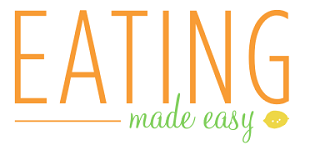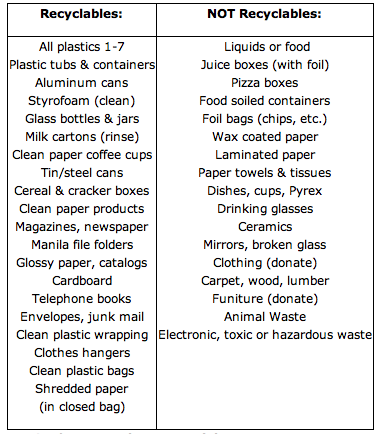When you toss something into the recycle bin, how do you know if it will truly be repurposed for something else? You don’t. But there are some easy things you can do to increase the chances of items being recycled. Here are some recycling tips to ensure your recycling efforts are fruitful.
- Think before you toss. Don’t just toss something into the recycle bin. Figure out if an item is recyclable by looking at it, cleaning it, and keeping a list handy of what’s recyclable in your area. Throwing garbage or non-recyclables into the recycling may mean that none of your recyclables get recycled, so be diligent.
- Find out what’s recyclable in your area. Here’s a list of commonly recyclable items. Check Recycle Cartons to find out if cartons (like milk, juice, etc) are recyclable in your area. Note: the list below is for my own hometown, Hermosa Beach, CA but may not be the same where you live.
- Clean out containers! Dirty or food-soiled containers WILL NOT GET RECYCLED. Thus, it’s important to wash out containers (like you were washing a dish) before you toss them in the recycle bin.
- Look for the number on the bottom of plastic containers, which will be inside an triangle of arrows like the one above. Numbers 1-2 are the most commonly recycled plastics. For the plastics not recyclable in your area, reuse the container or throw it away. Here’s a Plastic Recycling Cheat Sheet to use at home.
- Throw out food-soiled paper. Paper coffee cups, paper towels, napkins, greasy paper, pizza boxes, juice boxes, and anything else that has food or beverage remnants on it cannot be recycled. These items can sometimes be composted if you have a compost pile or there are services in your area, but tossing them into the recycle bin may mean all your recyclables end up in a landfill.
- Enclose small bits of paper in a larger paper bag. If you’re shredded confidential information, or tearing up paper to be recycled, put the scraps into a paper bag so the pieces are contained and can be sorted at the recycling center.
- Bring plastic bags back to the grocery store for recycling. Of course, the best way to reduce bag waste is by bringing your own reusable bags. But if you forget, reuse the bags you bring home or stick them in the car so you remember to recycle them next time you’re at the store. Bags are usually not recyclable via residential recycling.
- Get off junk mail lists so you produce less paper waste. Opt out here.
- Recycle old batteries, even rechargable batteries from cell phones, computers, and power tools – but not in the regular recycle bin. Find a drop off location in your area.
Most city or county websites have charts of what’s recyclable in that particular area, like this one, from my own town:
What does all this have to do with “eating made easy?” A lot! Much of the household waste we produce comes from the kitchen, so paying attention to what goes where can greatly reduce your carbon footprint and lower your family expenses.








3 Comments
Brian
January 28, 2013 at 9:05 amI find cooking from scratch greatly reduces a number of things. My food bill, packaging and my cholesterol!
Amelia
January 28, 2013 at 11:36 amSo true, Brian!
shelley
October 21, 2013 at 4:51 pmAs you know, I love this type of post. So much of this information is not obvious, and I don’t ever really see any clarification elsewhere. I think most people don’t know that if the containers they toss into the recycling bin are left dirty, the WHOLE BAG/CONTAINER doesn’t make it. Thanks!